Echium wildpretii
Echium wildpretii is grown primarily for its flower spike, but grown as a 'pack' plant it becomes a head turner par excellence.
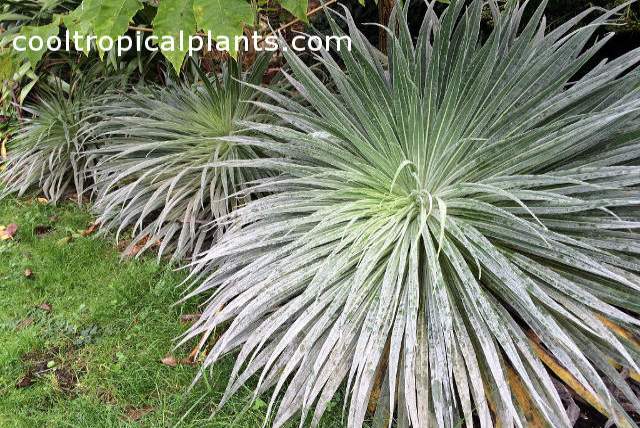
Echium wildpretii is given a cold tolerance of -7ºC (19.4ºF) but this is for its native habitat on the dry, sunny, volcanic peaks of the Canary islands. Such tolerances do not translate well to gloomy, wet northern European winters.
Grow this plant for its pre-flowering rosettes and you won't be dissapointed. Flower spikes should be viewed as a bonus. The flower spikes achieved in Northern climes pale a bit in comparison to their wild counterparts (Think of a nice healty fox tail compared to one with mange). The spikes still grow tall but lack the bushiness of plants grown in strong light and as such the colour of the spike is diluted. (They're still not bad though). The plants are typically triennial ie. fowering in their third season, with the rosettes looking most impressive at the end of year two.
Relative to Echium pininana the rosettes of Echium wildpretii are much more compact. They tend to stay where you planted them and, if you so desire, would be easier to construct them a rain shelter.
Echium wildpretii from seed
Growing Echium wildpretii from seed is straight forward and requies no special treatment.
- Surface sow the seeds in seed trays of multipurpose compost, anytime after mid February (northern hemisphere).
- Place them in a position in good light, preferably a greenhouse.
- No bottom heat is required.
- Seeds should begin to germinate after two weeks.
- When the seedlings have their first pair of true leaves, prick them out and pot them up indivudually.
(A guide to pricking out can be found here.)
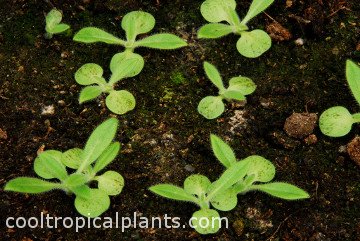
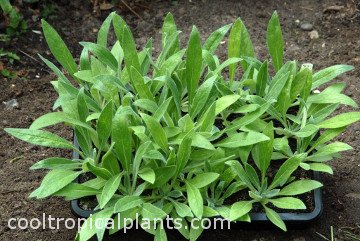
- The newly germinated seeds at the pricking out stage (on the left). They closely resemble Echium pininana seedlings but have a slighlty mottled appearance. Knowing this variation will help you to differentiate between any wildpretii and pininana self-sown seedlings that are bound to pop up around the garden in future years.
- The same seedlings five weeks later (on the right).
Planting out
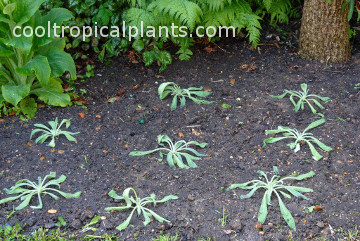
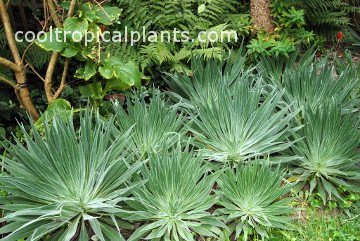
- The seedlings were planted out directly from the seed tray (Late May). In hindsight it would have been better to prick out the seedlings into individual pots (as recommended) at an earlier stage and allow them to develop new roots prior to planting. As it turned out, a daily watering for the first week was enough to get the plants to pull themselves together.
- Once the plants established themselves they survived on rainfall alone.
- The picture on the right shows the plants in early September.
The following winter was exceptionally mild with only a few nights barely below freezing. The majority of the Echiums survived in various parts of the garden even if they did look a little scruffy come the spring. The hope was that there would be a veritable forest of wildpretii flower spikes. The plants however had different ideas. Not a single plant flowered. They did however go on to look even more impressive than they looked the previous year.
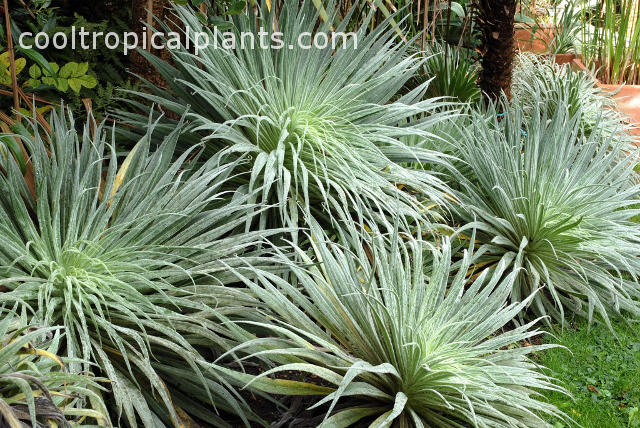
- The plants in the picture above are the main group whose development has been followed on this page. Some overhead protection was provided by a group of nearby Cordylines. They received virtually no sun all winter.
- (The plants at the top of the page received almost no sun during the winter either and limited overhead protection was provided by Tetrapanax.)
- The plants below were planted just a few meters away but received no sun all winter. Protection was provided by Bamboo.
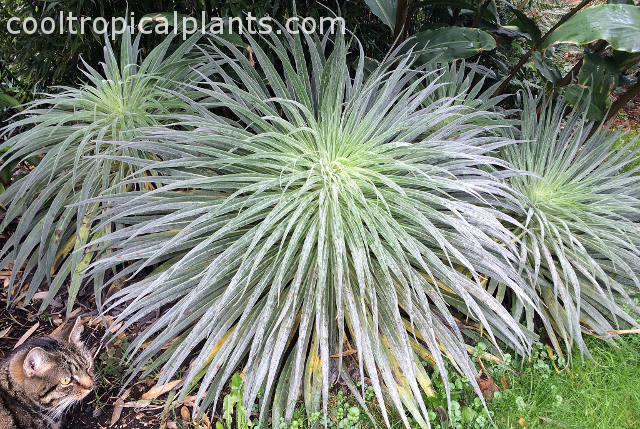
The following winter was almost as mild as the previous one. Soon after these pictures were taken there was a very wet spell. The attrition rate was very high and a lot of plants died well before any signs of frost.
Growing conditions for Echium wildpretii
To maximise the survival rates of your plants in an ideal world:
- Position your plants where they will receive maximum winter sun.
- Use well drained soil.
- Plant close to a wall.
- Protect from winter rains.
- Plant in raised beds.
The more of these criterea you can meet the greater the chances of you ever seeing flowers.
To find out what happened next in this fascinating saga, Spoiler Alert! click here: Echium wildpretii flowers.

